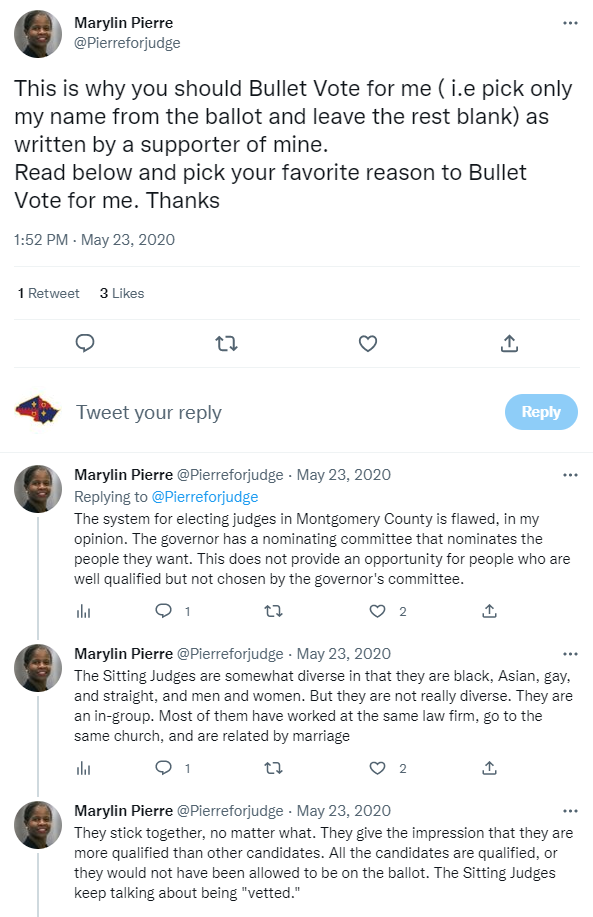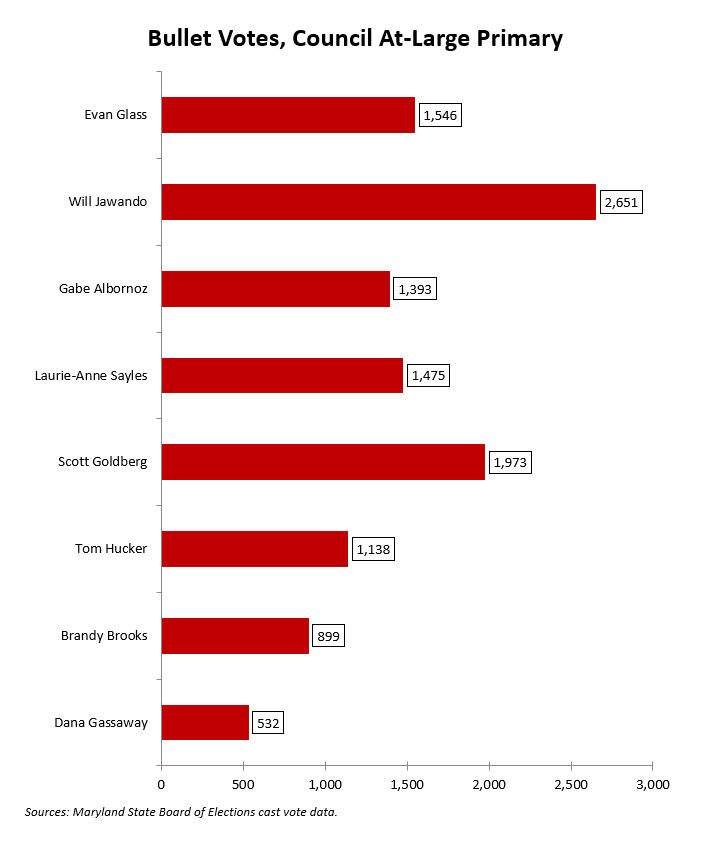By Adam Pagnucco.
Let’s review The Waldstreicher Doctrine. It’s a perspective on multiple seat races initially shared with me by District 18 delegate candidate Jeff Waldstreicher in 2006 (an election which he won). It goes something like this:
There are three seats at stake. I tell voters that I don’t have to be their first choice, although that would be great. I don’t even have to be their second choice. I just want to be one of their top three choices. A vote is a vote and they all count equally.
The Waldstreicher Doctrine is a great way to think about delegate or council at-large races since they have multiple seats available for winning. But it’s hard to determine the intensity of support for such candidates. If a council at-large candidate is everyone’s fourth choice, he or she would finish first in that race. In a one-seat race, that candidate would fare poorly.
Cast vote data gives us one key data point to lift the veil on intensity measurement: it allows us to examine bullet voting. A bullet vote is when a voter is allowed to vote for multiple candidates in a race but chooses to vote for only one. Bullet voters are extremely valuable for delegate candidates and council at-large candidates because they both give them a vote and deny other candidates a vote by picking none of them. It’s a two-fer and some candidates have actually asked for bullet votes in the past – although usually quietly.

Circuit court judge candidate Marylin Pierre, who challenges appointed incumbents, explicitly asks for bullet votes in 2020.
The chart below shows the number of bullet votes cast for each council at-large candidate in the 2022 primary.

Will Jawando finished second in total votes but he was the runaway leader in bullet votes. Scott Goldberg, who finished fifth overall, was second in bullet votes. Evan Glass, who received more votes than anyone else in the county, was third in bullet votes. Well, surprise surprise!
The chart below shows the percentage of votes received by each council at-large candidate that were bullet votes.

On this measure, Goldberg is the leader followed by Jawando. Glass, who finished first in total votes, is dead last. Now let’s recognize that one reason why Glass is last is because his denominator is the largest.
Glass and Jawando are thought to be among the prime contenders for Jamie Raskin’s seat in Congress should Raskin choose to run for U.S. Senate. (Yes folks, this is the local version of Maryland’s ancient game of political dominoes.) In Congressional District 8, Glass received 74,042 votes in the primary while Jawando received 66,809. But in terms of bullet votes, Glass received 1,259 in the district while Jawando received 2,145. Jawando’s bullet percentage in the district was 3.4% while Glass’s was 1.8%.
Now let’s not read too much into this. There were only 11,607 bullet votes cast in the council at-large race, or about 2.5% of the total votes. So bullet votes are just the tip of the iceberg in terms of what candidates will get in a top-tier, one-seat race like Congress or county executive.
But for whatever it’s worth, this data suggests that the bases of Will Jawando and Evan Glass, arguably the top two progressive politicians in the county, are different. Glass’s base is larger but less intense. Jawando’s base is smaller but more intense. This is no accident – while they agree on many issues, they have different styles and have adopted different strategies for success. If the two ever meet in a future one-seat race, it will be interesting to see which strategy pays off better in the end.
We will start looking at where these bullet votes came from in Part Two.
